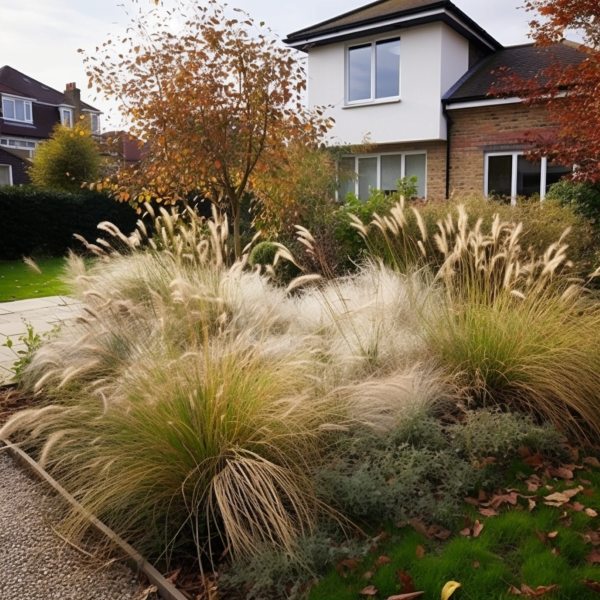Wildflower cottage gardens are a delightful blend of traditional cottage garden plants mixed with native wildflowers. This creates a relaxed, naturalistic style brimming with old-fashioned charm and the buzz of pollinators.
If you want to attract more wildlife to your garden or simply enjoy a low-maintenance, informal space, a wildflower cottage garden is an excellent choice.
Top Tip
Allow plants to self-seed freely to create a natural, evolving look that attracts pollinators and other wildlife to your space.
This post contains affiliate links which means we may make commission from any qualifying sales with no extra cost to yourself.
What is a Wildflower Cottage Garden?

A wildflower cottage garden combines the romantic, informal planting style of a traditional English cottage garden with the ecology benefits of native wildflowers. The result is a space that looks both beautifully unstructured yet supports biodiversity.
Some key features of these wildflower-enhanced cottage gardens include:
-
A blend of cultivated cottage garden favorites and wild, naturalistic flowering plants. This attracts diverse pollinators.
-
Relaxed, free-flowering design with plants spilling over beds and paths.
-
Encouraging self-seeding plants to create an evolving, dynamic garden.
-
Providing food and habitat for wildlife including bees, butterflies, birds and more.
The aim of this article is to give you a complete guide to planning, planting and caring for your own fabulous wildflower cottage garden.
Planning Your Wildflower Cottage Garden

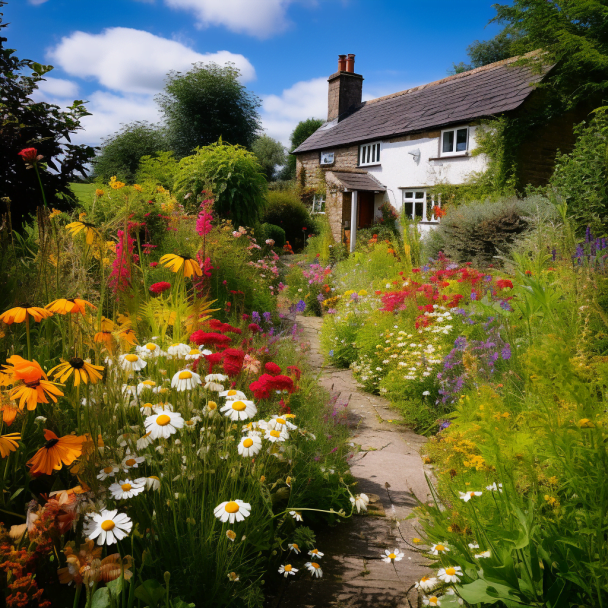

When planning your wildflower cottage garden, there are a few key considerations:
Environmental Conditions
Assess the light levels, soil type and drainage of your garden area. This will determine the best wildflowers and companion plants to choose. Most wildflowers prefer full sun but some do well in partial shade.
Plant Selection
Select a mixture of classic cottage garden favorites along with native wildflowers suited to your environment. The native plants will support local biodiversity. See the plant list section below for inspiration.
Design Layout
Wildflower cottage gardens have an informal, natural look. Group plants in drifts winding through beds rather than strict lines. Allow plants to gently self-seed and intermingle.
Preparing the Soil
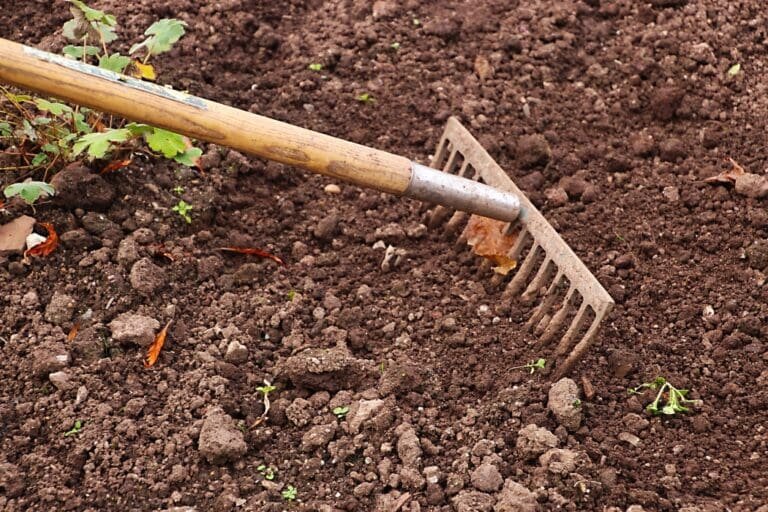
Wildflowers grow best in relatively poor, low nutrient soil. Here are some tips for preparing your garden:
-
Remove any existing lawn or vegetation.
-
Loosen and break up the top layers of your soil, removing any rocks or debris. Most wildflowers thrive in poor soil so don’t worry about adding fertilizers or compost.
-
Rake the area flat and smooth out any bumps for a tidy base.
Planting Your Wildflower Cottage Garden
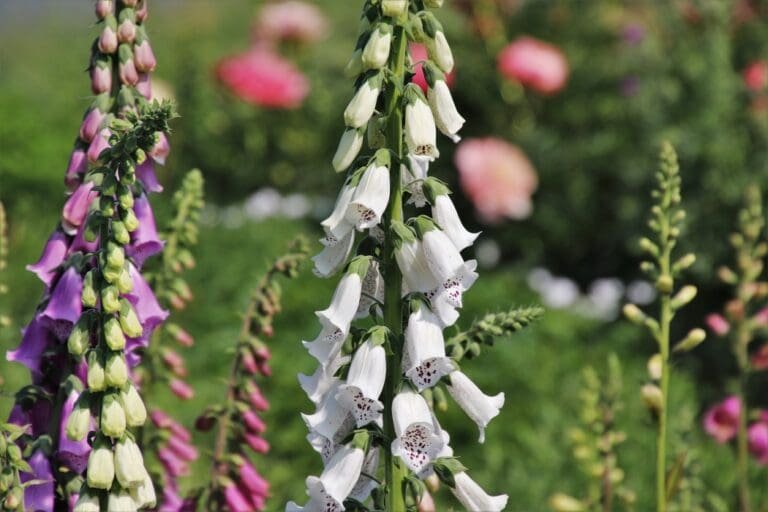
You have several options when adding plants to your wildflower space:
Seeds – inexpensive way to establish large numbers of plants but can take 1-2 years to reach maturity
Plants – more instant effect but pricier. Use for key specimens.
Bare root perennials – offer a compromise with faster growth than seeds but cheaper than plants.
When planting:
-
Follow spacing guidelines on seed packets or plant tags. Give enough room for plants to mature.
-
Water thoroughly after planting and mist seeds daily until germination.
-
Adding mulch around new plants helps retain moisture.
-
Weed regularly until dense growth establishes.
Top Plants for a Wildflower Cottage Garden
Here are some of the best wildflowers and traditional cottage garden plants for creating your own unique plot:
1. Yarrow
Feathery, aromatic perennial that flowers June-September. Attracts pollinators. Does well in poor, dry soils. Native to the UK.
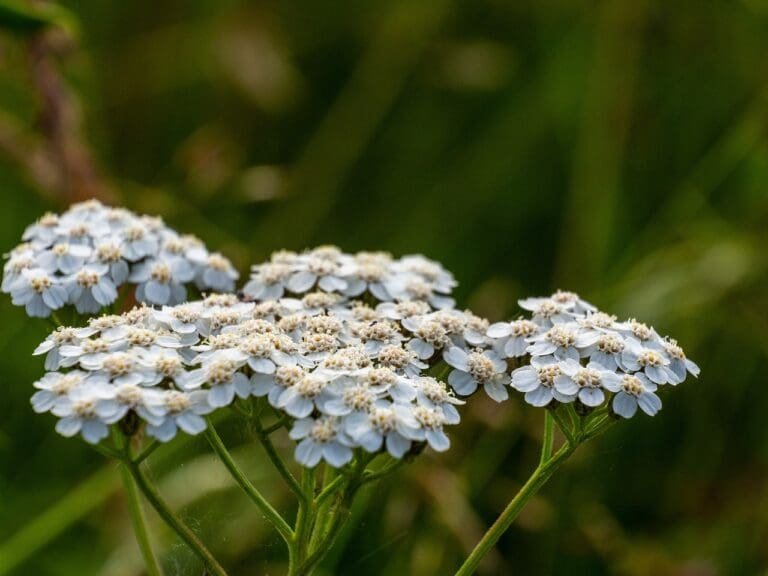
2. Cornflowers
Classic cottage garden annual with vivid blue flowers from early summer onwards. Grows 20-90cm tall. Leave some seed heads for self-sowing.

3. Cow Parsley
Wispy, white-flowered native perennial. Flowers April-June and reaches 60-150cm tall. Provides food for caterpillars.

4. Echinacea (Coneflower)
Bold, daisy-like purple flowers with bee-friendly, nectar-rich centers. Blooms June-August. 75cm tall.
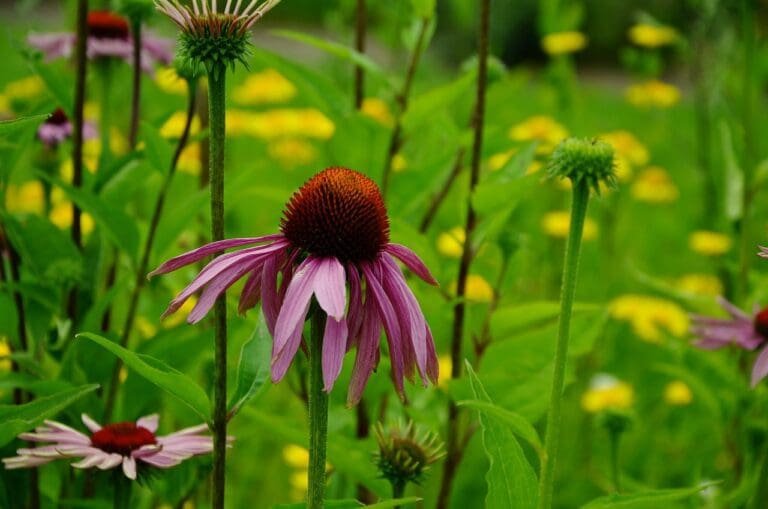
5. Field Scabious
Airy-looking perennial covered in pollen-rich pincushion flowers from June to October. Can reach 90cm tall.

6. Foxgloves
Woodland native producing tall spikes of tubular flowers loved by bees. Self-seeds freely. Flowers May-July.

7. Hardy Geranium (Cranesbill)
Mounding perennial smothered in saucer-shaped blooms from May to September. Grows 30-60cm tall. Good groundcover.

8. Lupins
Spikes of pea-like flowers in vibrant shades. Short-lived perennial but self-sows. Height 60-120cm

9. Ox-eye Daisy
Classic, cheerful cottage garden daisy. White petals with yellow centers. Blooms May-October. Height 30-90cm.

10. Poppy
Showy, tissue paper blooms in summer. Many types and colors. Allow seed heads to self-sow. 30-75cm height.

11. Yellow Rattle
Pretty but ruthless – this semi-parasitic annual suppresses grass growth, helping wildflowers thrive.

12. Rudbeckia (Black-eyed Susan)
Cheerful, daisy-like perennial with dark central cones and golden yellow petals. Flowers July to September. 75cm height.

Caring for Your Wildflower Cottage Garden
Proper care will keep your wildflower cottage garden looking its best. Most wildflowers are drought-tolerant once established but benefit from occasional deep watering during very dry periods – avoid overhead watering which can cause mildew.
Apply a 2-5cm layer of organic mulch around plants in spring to help retain moisture and suppress weeds, replenishing annually. Pruning entails cutting back any dead or damaged growth in spring, leaving seed heads over winter for birds, and trimming any overgrown plants after flowering to maintain a tidy growth habit. With attention to water, mulching and selective pruning, you can maintain a healthy, thriving wildflower cottage garden.
Final Thoughts
With a well-planned design, suitable plant choices and minimal care, you can create a flourishing wildflower cottage garden that looks charming while also attracting wildlife. Follow this guide for the key steps to get your wild space growing. Soon you’ll have a garden filled with natural beauty that you, the local pollinators and other wildlife can all enjoy.
Frequently Asked Questions
Q. How do you start a wildflower border?
Prepare the soil, sow a wildflower seed mix suited to your conditions in spring or autumn, water during germination, weed regularly at first and be patient for results!
Q. What month is best to plant wildflower seeds?
The ideal time is September-October or March-April. This gives seeds time to establish before hot, dry summers or freezing winters.
Q. Do wildflowers grow back every year?
Many are short-lived perennials but self-sow freely. Encourage seeding and leave pods over winter for continuous flowering displays each year.
Q. Can I just sprinkle wildflower seeds in the UK?
You can but preparing the area first and lightly raking seeds in gives better results. Some surface sowing is good though for self-seeding.
Q. Should I remove grass before planting wildflowers?
Yes, grass is a strong competitor. Remove turf or use an annual weed suppressor like Yellow Rattle to reduce grass vigour and give wildflowers a better chance.



